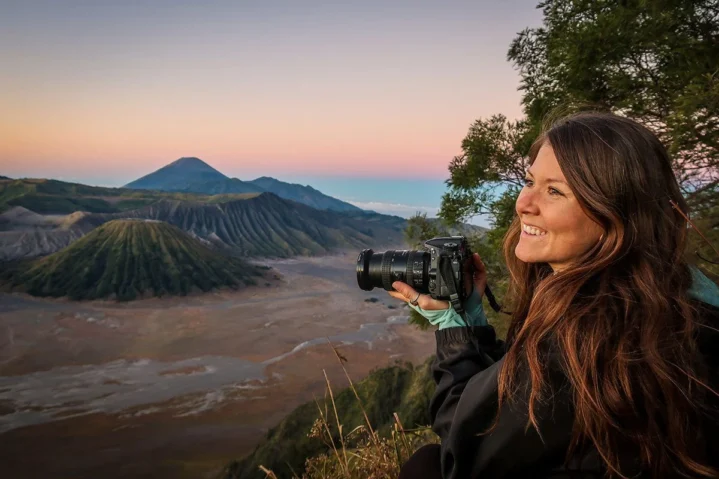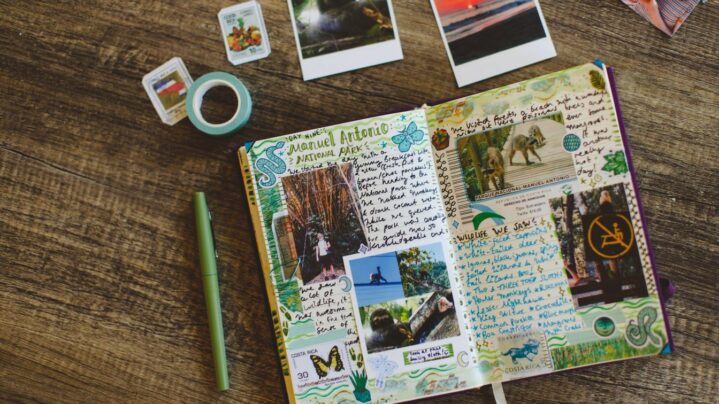A travel journal is one of the most meaningful ways to preserve your hiking memories. Documenting your experiences allows you to relive the sights, sounds, and emotions of your outdoor adventures. Whether you want to create a detailed narrative or a visual scrapbook, there are endless possibilities for crafting a journal that reflects your journey.
Choosing the Perfect Journal and Supplies
Selecting the right journal is the first step in creating a travel record. Consider a durable notebook with waterproof pages if you plan to take it on hikes. Spiral-bound journals allow for easier handling, while hardcover options provide added protection. Include tools like pens, markers, and adhesives to personalize your entries.
While photo albums can complement your journal, focus on integrating photographs directly into your pages. Use small prints or Polaroids to enhance your storytelling. Pictures of trail signs, landscapes, and wildlife add visual context to your written reflections, making the journal more engaging.
Documenting Every Aspect of Your Adventure

A travel journal goes beyond recording basic details. Capture the essence of your hikes by describing the scenery, weather, and unique features of the trails. Use descriptive language to recount how the sun felt on your skin, the sound of rustling leaves, or the smell of fresh pine. Include your emotions during challenging climbs or moments of awe.
Keep track of practical details such as trail names, distances, and elevation gains. Add maps or trail guides for reference. These details provide valuable context for future hikes and create a well-rounded narrative of your adventures.
Creating Sections for Organization
Organizing your journal into sections helps streamline your content. Dedicate one section to trail highlights, where you can document favorite viewpoints, campsites, or waterfalls. Another section could focus on gear notes, recording what worked well and what could be improved.
Include a space for reflections to jot down lessons learned or personal growth achieved during your hikes. You can also create a section for sketches if you enjoy drawing, capturing the natural beauty you encounter. Sections allow for a versatile journal that covers all aspects of your hiking experience.
Using Creative Elements to Bring Memories to Life

Infuse creativity into your journal by incorporating elements like sketches, stamps, or pressed flowers. Sketches can be quick outlines of mountains or detailed renditions of plants you found along the trail. Pressed flowers add a tangible piece of nature to your entries.
Stamps or stickers featuring outdoor themes can make your pages visually appealing. Experiment with different writing styles, like bullet points for quick notes or narrative paragraphs for storytelling. These elements make your journal unique and personal.
Adding Souvenirs and Keepsakes
Collect small souvenirs during your hikes and integrate them into your journal. Items such as ticket stubs, trailhead brochures, or postcards can serve as visual reminders of your trips. Use adhesive pockets or transparent sleeves to secure these keepsakes without damaging your pages.
Include small items like leaves or feathers, as long as they are ethically collected. These tangible pieces of your journey enhance the storytelling aspect of your journal, giving it a multidimensional quality.
Capturing Experiences Through Photography

Photos are an essential part of preserving your hiking memories. Use your camera or smartphone to capture scenic views, wildlife, and candid moments with friends. While photo albums can serve as a standalone keepsake, integrate your favorite shots into your journal.
Print small photos that fit neatly on your pages. Arrange them alongside your notes to create a cohesive narrative. Add captions to highlight the significance of each image, whether it is a breathtaking view or a funny mishap along the trail.
Writing Reflective Entries
Reflective writing allows you to process your experiences on a deeper level. Write about the emotions you felt when reaching a summit or the challenges you overcame during a tough section of the trail. Reflect on how nature impacts your mental and physical well-being.
Include entries about the people you met along the way, whether fellow hikers or locals who shared their stories. These reflections provide a personal connection to your journal, making it more than just a record of facts.
Incorporating Quotes and Inspiration
Quotes can add depth and inspiration to your journal. Include passages from books about hiking or nature, or jot down meaningful phrases you heard during your journey. These quotes can serve as a source of motivation when you revisit your journal.
Write your own thoughts or mantras that kept you going during challenging moments. These personal reflections will remind you of your resilience and determination.
Exploring Different Layouts

Experiment with various layouts to keep your journal visually appealing. Use a two-page spread for each hike, with one page dedicated to photos and sketches and the other for writing. Create timelines to illustrate your daily progress on multi-day hikes.
Try grids for listing highlights or free-form layouts for creative entries. The flexibility of your layout allows you to express your personality while documenting your adventures.
Maintaining Your Journal in the Outdoors
Protecting your journal during hikes ensures it remains in good condition. Store it in a waterproof bag or case to prevent damage from rain or accidental spills. Bring lightweight supplies to avoid adding extra weight to your backpack.
Take notes during breaks or at the end of the day to capture fresh details. Short entries can be expanded later when you have more time to reflect. This habit ensures you do not miss key moments while keeping your journal manageable on the trail.
Sharing with Others

Sharing your travel journal can inspire others to explore the outdoors. Use it to recount your stories with friends or family. Consider creating a digital version by scanning pages or taking photos of your entries to share online.
Encourage fellow hikers to start their own journals. Your stories and insights might motivate them to document their journeys, fostering a shared appreciation for nature and adventure.
Revisiting Over Time
One of the greatest joys of keeping a travel journal is revisiting it years later. As you flip through its pages, you will be transported back to the trails, reliving the challenges and triumphs of your hikes. The memories you have preserved will serve as a reminder of your connection to nature.
Use your journal as a guide for planning future hikes, referring to trail notes and gear recommendations. It will remain a cherished keepsake that grows in value with time.
Closing Thoughts
Creating a travel journal allows you to capture the essence of your hiking experiences. By documenting every detail, incorporating creative elements, and adding personal reflections, you build a meaningful record of your adventures. This journal becomes more than just a book—it is a gateway to reliving the beauty, challenges, and rewards of your time spent exploring nature.
